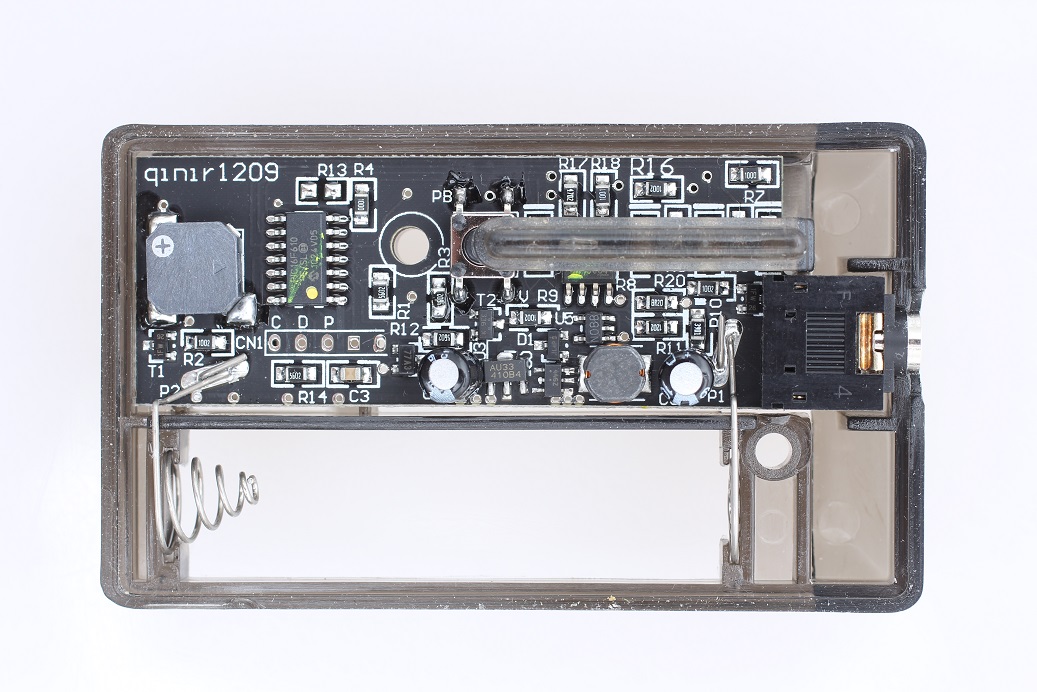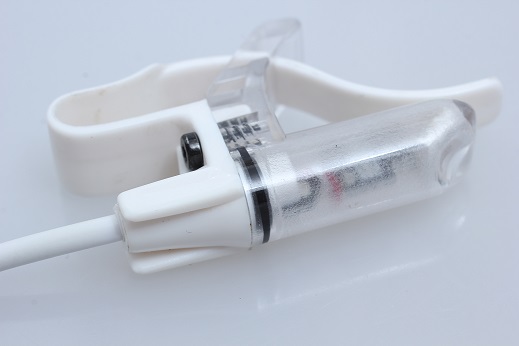I'm glad you're finding positive effects with your homemade gadget, @escallum. I've been experimenting on myself with reflex tests (
http://www.neurofeedback-partner.de/product_info.php?info=p86_capit-o.html) along with memory tests and have found a noticeable improvement over the course of three months or so (I do own the Vielight Neuro + Vielight 810 though). I could publish my Excel file test sheet results if anyone's interested. Though, a n=1 sample size is not a good measure, would be nice if other people were to self-test and document their results.
I'm a retired electrical engineer, as some of you know, so I have a lot of extra free time. Over the past month, I've looked into building my own intranasal devices by dismantling the Vielight 810's control unit(see picture below) and examining the circuit board. From what I can tell from the layout, the Vielight devices appear deceivingly simple but are actually very efficiently designed, I wouldn't be able to replicate this miniaturized PCB layout without a team of electrical engineers and a relatively high capital cost to build something that's marketable.
Sorry about the dirt LOL, my basement workshop needs to be dusted.
I did consider the oral cavity as an alternative too, given that I can't actually manufacture and sell anything that stimulates the brain via light energy through the intranasal channel because of Vielight Inc's patent. However, the oral cavity imo is less efficient, based on data and after roughly crunching numbers through the formulas provided in this study :
https://www.researchgate.net/public...d_NIR_light_dosimetry_in_the_human_deep_brain .
I, personally, do agree with the scientists in that study that the intranasal channel is the most efficient channel to reach the brain given that it's closer to the brain plus there is the added benefit of exposing blood vessels to photonic stimulation too.
If anything, I'd probably focus my efforts on making a device that "photobiomodulates" via the mouth but having something in my mouth is less comfortable than the nose for me and much less effective.
Since we're on the topic.. this is the pricey Vielight Neuro's intranasal applicator that I've been trying to replicate without damaging (sorry about the dirty lens, I do a lot of outdoor photography)
From what I can see, there's quite a fair bit of microchip LED technology designed to extract/pulse 810 nm light. It's definitely a step above using regular LED diodes. Plus I did notice the lens has a slight angle (divergence) to it too, to point the light properly towards the brain (and not the eyes), something that regular LED diodes lack.
Either way, to each his own.. I have quite a lot of money saved and while I definitely think the Vielight devices are pricey, I think they have well-researched power density parameters/electronics etc.. a small investment if one considers the long run.
My main gripe is how the control units feel light and plastic-y and the back clip of my control unit broke after it fell on the pavement during a run - the exterior definitely doesn't reflect the quality of the interior. I'll probably be claiming warranty on it soon.


